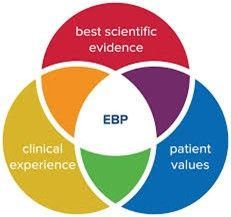Behavioral Health Productivity for Professionals: The Plan B Option
When the agency wants to meet behavioral health productivity standards, teach them the Plan B Option. Behavioral health agencies who bill mental health Medi-Cal face challenges with billing. Each agency receives a county contract for mental health services. Case management, mental health services such as therapy or collateral sessions with family, crisis intervention, and medication support. Other agencies treating foster family youth also use Intensive Care Coordination, Intensive Home-Based Services. And some provide Therapeutic Behavioral Services. Meeting the county revenue standards requires staff to bill a certain number of hours per week. Which ranges between 20 to 30 hours for behavioral health productivity. But it’s not always easy to reach these standards, because of the acuity of clients and other factors.
Why? Because clients cancel. No-show. Reschedule. Or things pop up where they can’t keep their appointment. Or the practitioner can’t make it. Plus with COVID and other factors, clients do not want to make their appointment.
This conflict between client engagement and agency revenue hits the practitioner who must meet their behavioral health productivity numbers or face possible ramifications. This requirement creates massive stress on the practitioner. “How do I have time for all my clients to meet them, document, and bill?”
To help them, let’s discuss the Plan A Option and the Plan B Option.
A clinician at an outpatient agency in the Los Angeles area found this problem. He noticed that every practitioner would plan out their schedule as if everyone would show up. That was the Plan A Option. They didn’t take into account that things would go wrong. They’d cancel or not be at their house when the practitioner came. And then they would have to make up all those hours somehow to achieve behavioral health productivity. Panic would set in.
This clinician used Murphy’s Law approach. Everything which can go wrong will go wrong. He found that if he planned, he would think of other ways, he could reach the client or someone else to discuss their services and move the case forward.
Suppose a client’s mother was supposed to come for a session. She cancels at the last minute. The clinician then would call her and speak to her instead and do the session over the phone. Instead of losing billing, the collateral service (talking with mom) went ahead as planned. Billing ensued and behavioral health increased.
Or a client was supposed to meet with the clinician. But she got sick and couldn’t make the appointment. The clinician spoke to the client’s teacher about her progress. About how she was doing in school and offered suggestions. Meeting the criteria for billing. Medical necessity (improving the client’s functioning) and benefitting the client (suggesting interventions). Problem solved.
With COVID-19 and the advent of telehealth services creating access for clients, the Plan B approach can work even more. Clients reticent to come into the office may be more willing to meet via phone or computer. Using a Plan A and Plan B approach together improves the behavioral health productivity for agencies and their staff.
Praxes helps behavioral health agencies with program development and operations.
For more information or a free assessment, please contact us.




